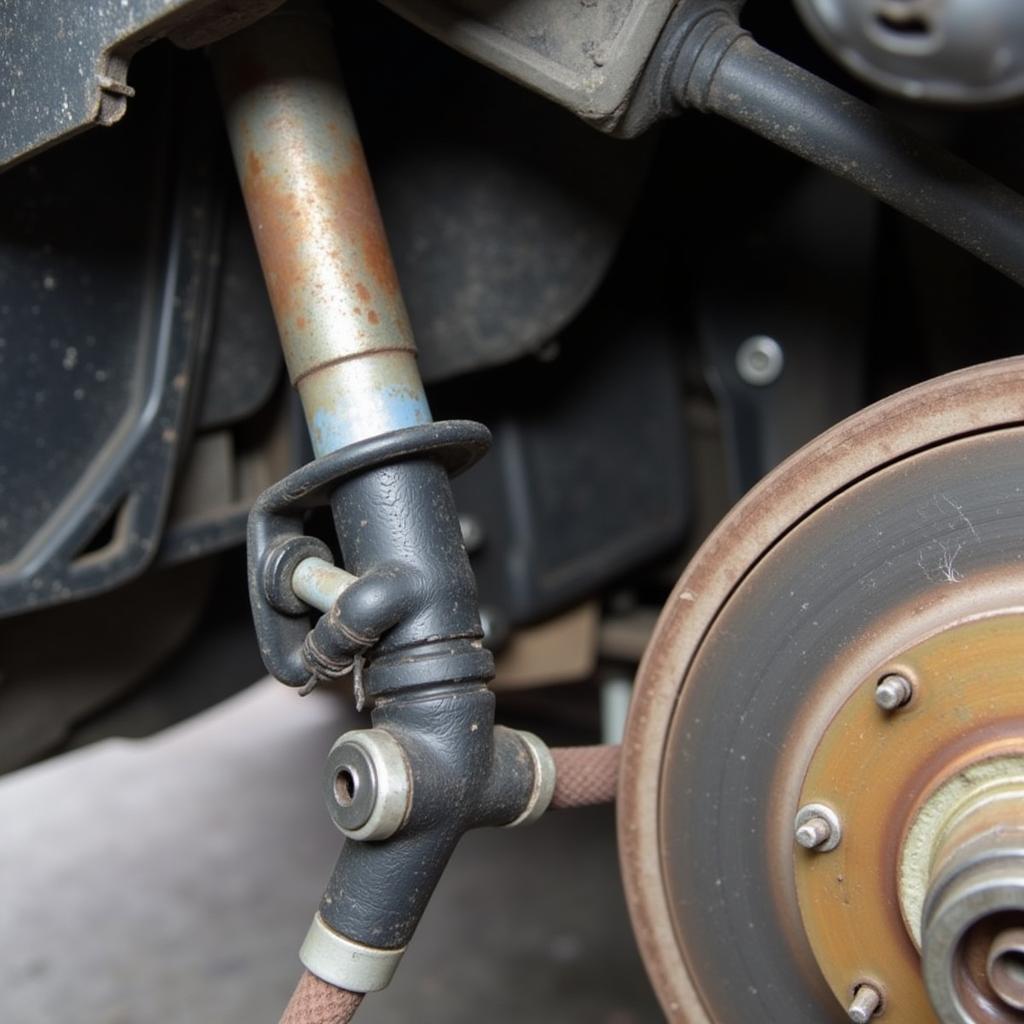Seeing a brake warning light illuminated on your BMW dashboard can be a nerve-wracking experience. It signals a potential issue with your braking system that needs your immediate attention. While visiting a certified technician is always recommended for a thorough inspection, there are instances where you might be able to diagnose and address the issue yourself. This comprehensive guide will walk you through the common causes of a BMW brake warning light and provide practical steps on how to turn it off.
Understanding Your BMW Brake Warning Light
Your BMW is equipped with a sophisticated system of sensors that continuously monitor the health of your brakes. When the brake warning light comes on, it’s the car’s way of communicating a potential problem. Here’s what the different brake warning lights on your BMW dashboard typically indicate:
- Red Brake Warning Light: This usually signals a serious issue with the hydraulic brake system, such as low brake fluid. It demands immediate attention, and driving should be avoided until the problem is resolved.
- Yellow Brake Warning Light: This typically indicates an issue with the electronic brake system, like the Anti-lock Braking System (ABS) or Electronic Stability Control (ESC). While not as urgent as the red light, it still requires attention to ensure your safety on the road.
Common Causes of a BMW Brake Warning Light
Several factors can trigger your BMW’s brake warning light. Here are some of the most common culprits:
- Low Brake Fluid: This is the most common cause. Brake fluid can decrease over time due to leaks in the brake lines or a worn-out master cylinder.
- Worn Brake Pads: Brake pads have wear indicators that trigger the warning light when they wear thin, indicating it’s time for a replacement.
- Faulty Brake Pad Sensor: Sometimes, the sensor itself can malfunction, triggering the light even with sufficient brake pad thickness.
- ABS Sensor Issue: A malfunctioning ABS sensor can disrupt the system and illuminate the warning light.
- Parking Brake Engaged: A simple oversight, forgetting to disengage the parking brake fully, can also turn on the warning light.
Troubleshooting the Brake Warning Light
Before you start troubleshooting, ensure the parking brake is fully disengaged. If the light persists, you can proceed with the following steps:
-
Check Your Brake Fluid Level:
- Locate the brake fluid reservoir under the hood (refer to your owner’s manual).
- Check the fluid level against the “Min” and “Max” markings.
- If it’s low, add the correct brake fluid type as specified in your manual.
-
Inspect Your Brake Pads:
- Visually inspect the brake pads through the spaces between the wheel spokes.
- Look for significant wear.
- If they appear thin, you’ll likely need to replace them.
“When inspecting brake pads, it’s crucial to look for uneven wear patterns. This could indicate a problem with the caliper or other brake components and requires professional attention.” – John Smith, Senior Automotive Technician at XYZ Auto Services
- Check for Visible Leaks:
- Inspect the area around the brake master cylinder and along the brake lines for any signs of fluid leaks.
- Look for wet spots or drips.
 Inspecting for Brake Line Leaks
Inspecting for Brake Line Leaks
- Scan for Diagnostic Trouble Codes:
- If the brake fluid level is fine and you don’t see any obvious issues with the brake pads or leaks, it’s time to connect a diagnostic scanner to your BMW’s OBD-II port.
- The scanner will read any stored trouble codes that can pinpoint the exact issue.
When to Seek Professional Help
While some brake warning light issues can be resolved with simple DIY fixes, others require the expertise of a qualified technician. If:
- The brake warning light remains on after checking the brake fluid and visually inspecting the brake system.
- You’re uncomfortable performing any of the troubleshooting steps.
- You suspect a problem with your ABS system or other complex brake components.
…it’s best to take your BMW to a trusted mechanic or dealership for diagnosis and repair.
Conclusion
Addressing a brake warning light quickly is essential for your safety on the road. While simple checks like inspecting your brake fluid level can sometimes resolve the issue, more complex problems require professional diagnosis and repair. Never ignore a brake warning light, as it could indicate a serious problem with your BMW’s braking system. Remember, when in doubt, it’s always best to err on the side of caution and seek professional help.
